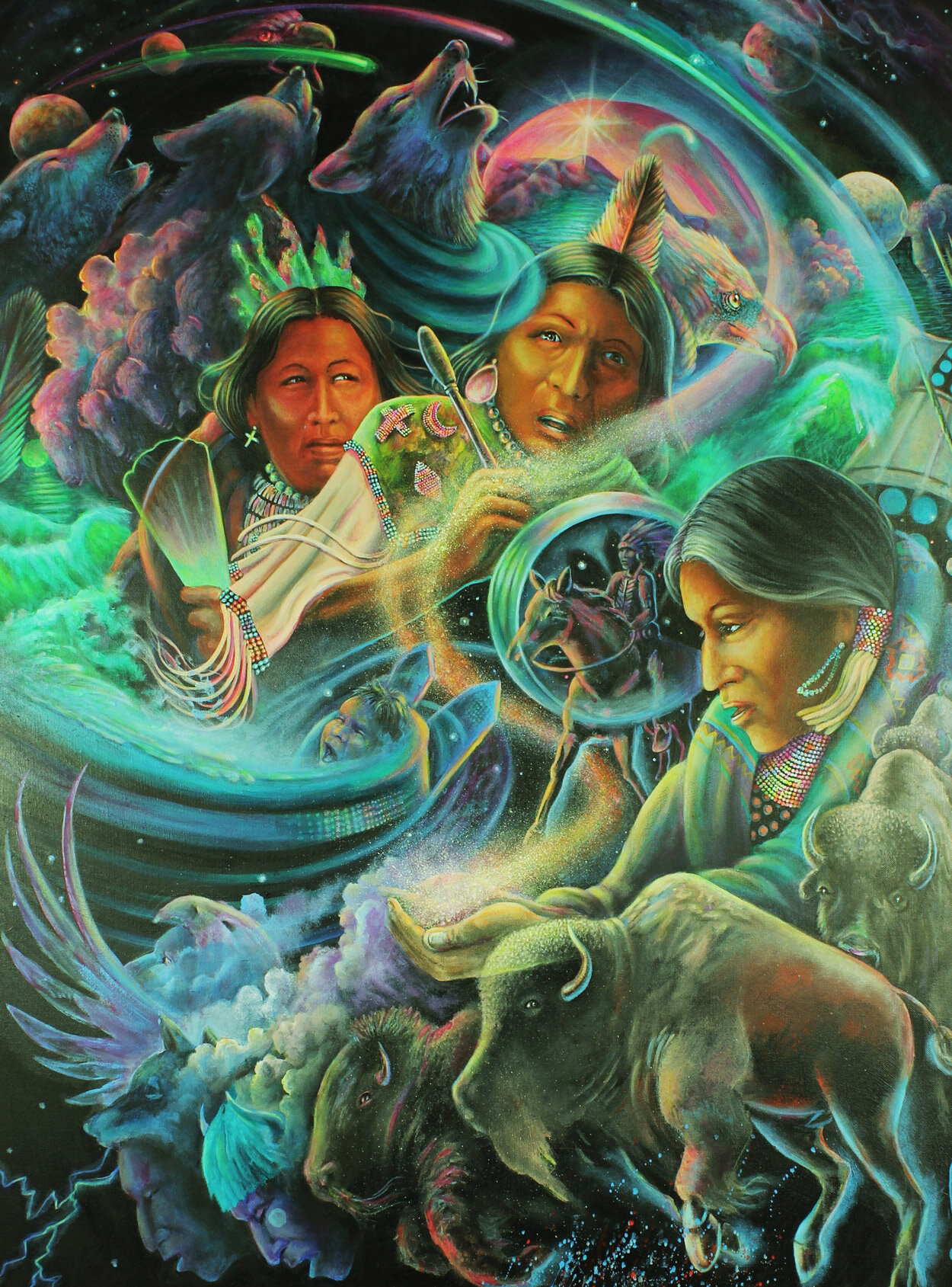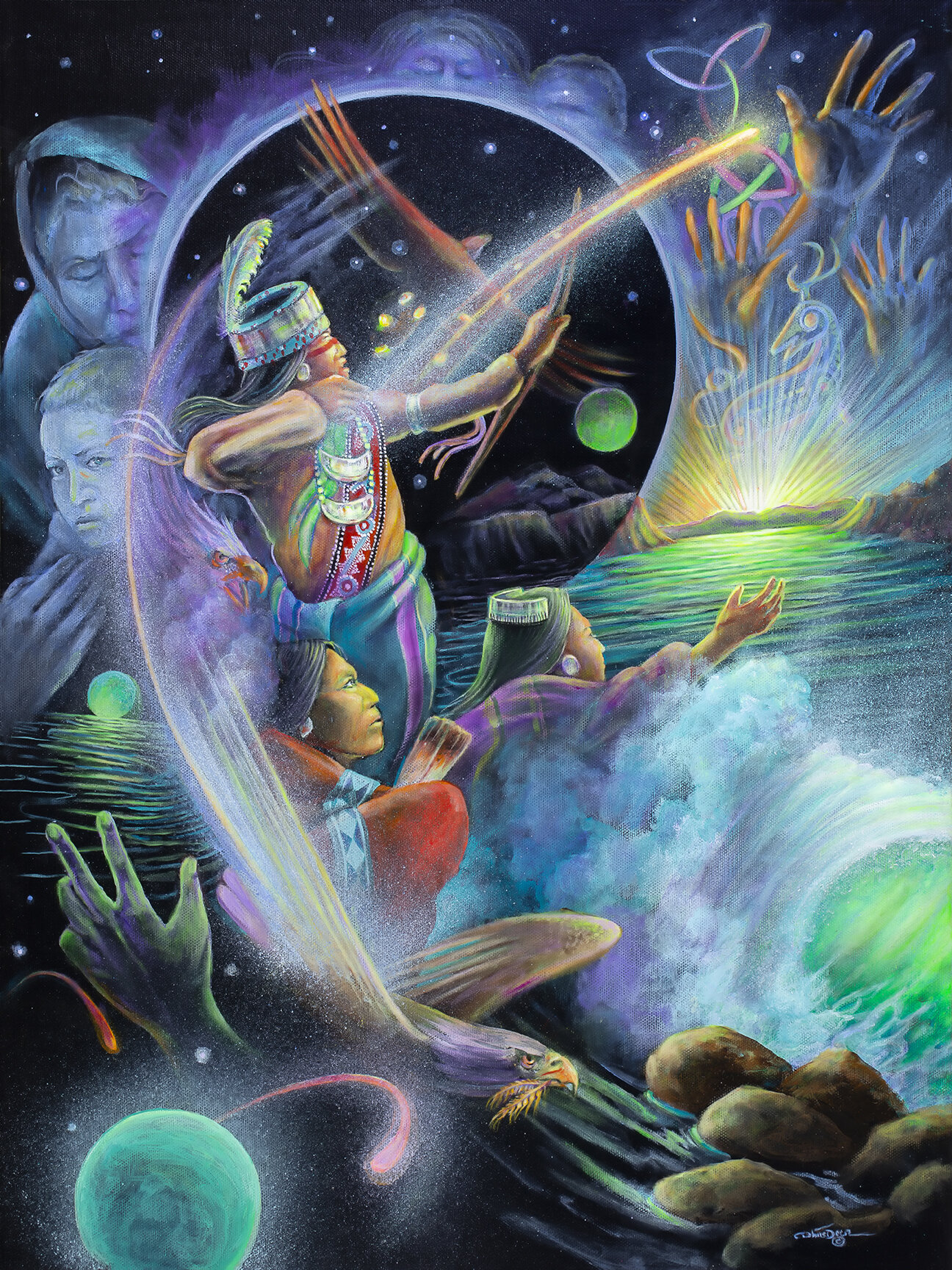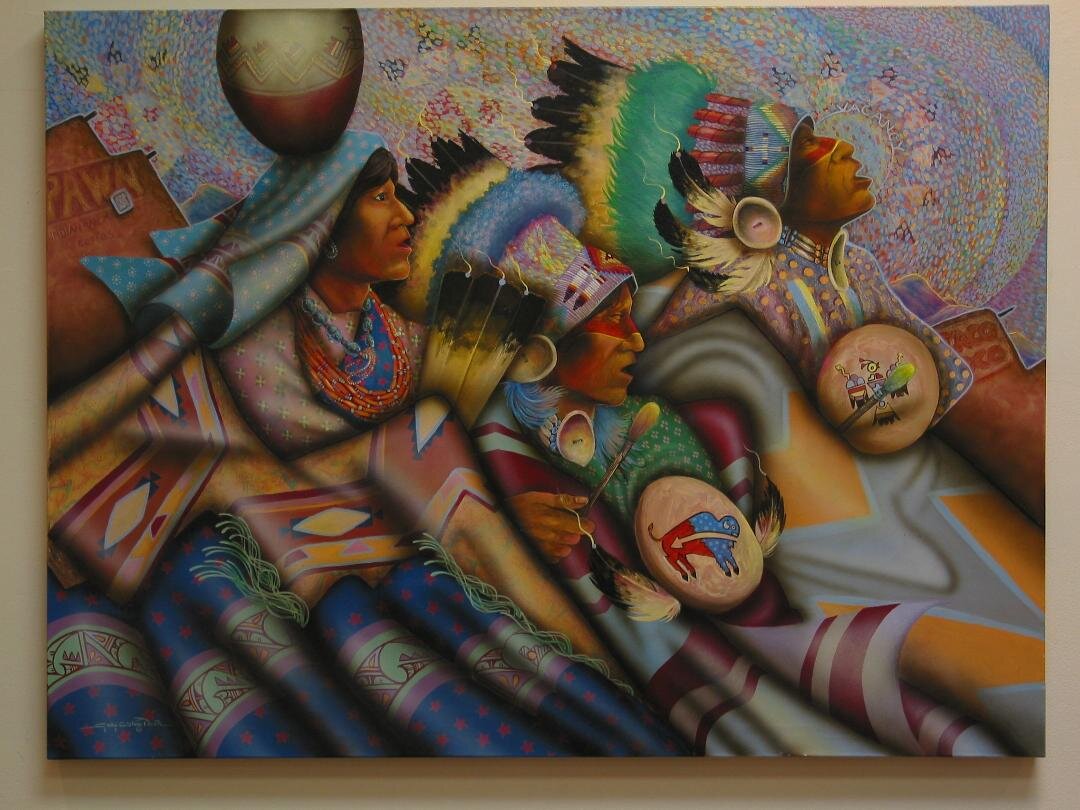Artist Waylon Gary White Deer: “An Arrow Shot Through Time”
The First Nations have always shown us a sense of passion for this land and their ancestors along with great leadership and great culture they bring to this country!
In this article, we show how trailblazers and leaders culture bridges between countries. These influences are among us every day and are still influencing many people all around the world! Many modern-day Choctaws have excelled in their fields; writers, musicians, and artists. Including Choctaw artist Waylon Gary White Deer!
Waylon Gary White Deer, is a globally known artist/painter, author, ancestral chanter/leader of dance, and professor of Choctaw studies at Bacone College in Oklahoma.
White Deer's artworks are set apart with a great feeling of light, and shading. He was impacted to paint by his late father, who would awaken out of dreams and head directly to the kitchen table to paint what he saw. Gary currently lives in Ireland. First visited the country in 1995 to honor the tribe's link to Ireland and then moved there in 2012. The Irish Examiner reported, “He was influenced to move in 2012 from Oklahoma because the ties Choctaw had with the Irish in 1847.” In 1847, Choctaw citizens donated $170, or tens of thousands of dollars in today's currency, to assist the Irish people during their historic time of hardship.
“I learned of the 1847 Choctaw donation to Famine Ireland when I was in Indian boarding school,” White Deer told the paper. White Deer continues to produce paintings in his new home. He said Irish culture influences the way he thinks about his Choctaw identity "Among other things my paintings try to show how alive with spirit our tribal ways are, and to help move them forward into other generations,” he told the paper. “The Choctaw donation was largely forgotten until the 1990s when Irish researchers discovered references to it and other small donations from around the world during preparations for the 150th anniversary of the famine. Today, White Deer says the tribe's extraordinary act was "like an arrow shot through time." The arrow shot through time was a large inspiration for White Deer. The famine in history really influenced him to move and really inspired him in many ways. It shows cultural ties between The Choctaw Nation and the Irish people.
Mr. White Deer has worked with the New York Times, Washington Post, and Boston Globe, to give some examples of his work. He has various workmanship grants and praises. White Deer claimed First Place at the Minneapolis Indian Market and Best of Show at the American Indian Exposition. He has held independent displays in the American Embassy in Ireland, the Southern Plains Museum, and the Irish Arts Center in New York.
Mr. White Deer has an autobiography titled Touched by Thunder, his autobiography was first published in Ireland by Currach Press and “then” republished in the United States. He has been busy working on his novel, Spirits in the Rain, and is the writer of an approaching book, Chahta Bilia Hoke: Overview of Choctaw History, which will be distributed by the Choctaw Nation Historical Society.
We are honored to have interviewed Mr. White Deer, below, for our debut blog post. He was gracious enough to share some of his works with us, to the right, and a few words he shared about them. We would like to say thank you to Mr. White Deer, for sharing your art and words with us.
Interview
1. Thanks for sharing your story with us. To start, maybe you can tell our readers some of your backstory.
My back story starts with my father driving my mother up to Claremore Indian Hospital from Wheelock Mission, in Oklahoma. My mother went into labor along the way and so I was born in Tulsa, instead.
2. Can you talk to us a bit about the challenges and lessons you’ve learned along the way. Looking back would you say it’s been easy or smooth in retrospect?
I started painting for a living at the same time that I started a family. My wife and I had seven children and she didn't work outside the home. Making a living from selling my art was often challenging.
3. So, maybe next you can tell us a bit more about your work?
I paint within an older inter-tribal art movement with communal origins, called "Traditional Indian Art" Its many varieties of painting styles are usually marked by fairly flat and two-dimensional imagery with subjective use of color and often, a strong sense of spirit.
Traditional Indian Art is a 20th-Century grassroots movement of largely self taught painters from traditional tribal backgrounds. With the demise of tribal ways of seeing the world however there has occurred a generational break, which has resulted in the movement going into decline.
4. Thank you for sharing that with our readers. Where we are in life is often partly because of others. Who/what else deserves credit for how your story turned out?
My painting style has been generally influenced by Oklahoma Indian artists who were around when I was growing up, painters like Jerome Tiger, Blackbear Bosin, Archie Blackowl, Fred Beaver, Rance Hood, Dick West, Acee Blue Eagle, Alan Houser and my father. Later on I discovered the works of Robert Redbird, Mirac Creepingbear, Parker Boyiddle and Loren Pasetopah.
No one taught me how to paint. My father once said that the little people helped him with his paintings and that one day they would help me, too. He used to wake from dreams and then, in the middle of the night, go to the kitchen table and paint what he had seen.
I work within a fading tradition, a tribal flow of spirit and I give the Creator credit for allowing me to first be born Choctaw and then, to develop as a painter.
5. Contact Info: Where we can find your work?
I may be contacted through my website at waylongarywhitedeerart.com
Blog by Marshall Purvis
References:
Event Junkies, “Nationwide RTE Choctaw Nation”, YouTube video, 6:53, May 21, 2013, https://youtu.be/Bx2PTvPpaPE
“#Muskogee by Gary White Deer.” SavvyCollector.com. Accessed February 8, 2021. https://savvycollector.com/products/3240-muskogee-by-gary-white-deer.
Meath, Aisling. “Choctaw Artist Waylon Gary White Deer Is Making Waves in Donegal.” Irish Examiner, April 5, 2017. https://www.irishexaminer.com/lifestyle/arid-20446977.html.
Waylon Gary White Deer Art. “Waylon Gary White Deer Art. Com.” Waylon Gary White Deer Art. Accessed February 8, 2021. https://waylongarywhitedeerart.com/.






